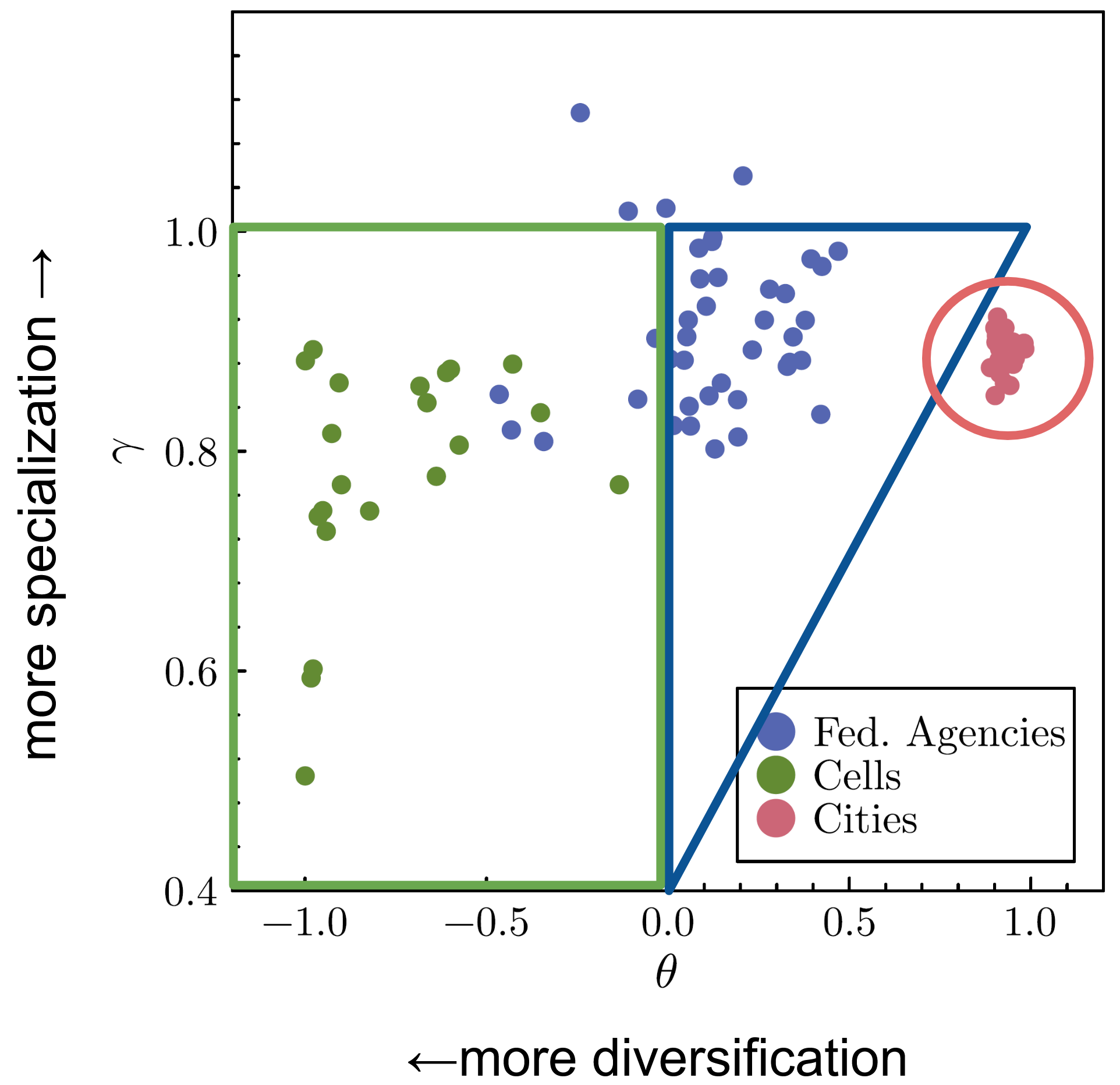IC2S2 presentation on diversity and specialization across social and biological systems
Recently, I presented work on the Scaling of diversity and specialization across socioeconomic and biological complex systems at IC2S2 in Philadelphia as a contributed talk. This work has been in a long time in the making with Vicky Chuqiao Yang, Hyejin Youn, Chris Kempes, Ignacio Arroyo, Sidney Redner and Geoffrey West!
In summary: diversity is all around us! Cities, companies, ecosystems, cells, proteins and at many other levels. Modeling these systems at the appropriate level of analysis is vital to understanding their properties—diversity at the level of proteins does not help describe diversity at the level of ecosystems or cities [1]. But perhaps the structure of diversity shares similar properties? In this work we look to describe these multiple levels of diversity using a unifying framework, based on a modified Yule-Simon [2], network growth-like [3], model. Recently compiled data across cities, federal agencies and proteins allows us to see how systems diversity and specialize as they get larger. This gives us a framework to see how changes in diversity and specialization affect organization structure. Below, I show a phase diagram of model parameters across federal agencies, cities and cells. Look for our pre-print coming out soon!

References
- [1] Anderson, P. W. (1972). More Is Different: Broken symmetry and the nature of the hierarchical structure of science. Science, 177(4047), 393-396.
- [2] Loreto, V., Servedio, V. D., Strogatz, S. H., & Tria, F. (2016). Dynamics on expanding spaces: modeling the emergence of novelties. Creativity and universality in language, 59-83.
- [3] Krapivsky, P. L., & Redner, S. (2001). Organization of growing random networks. Physical Review E, 63(6), 066123.